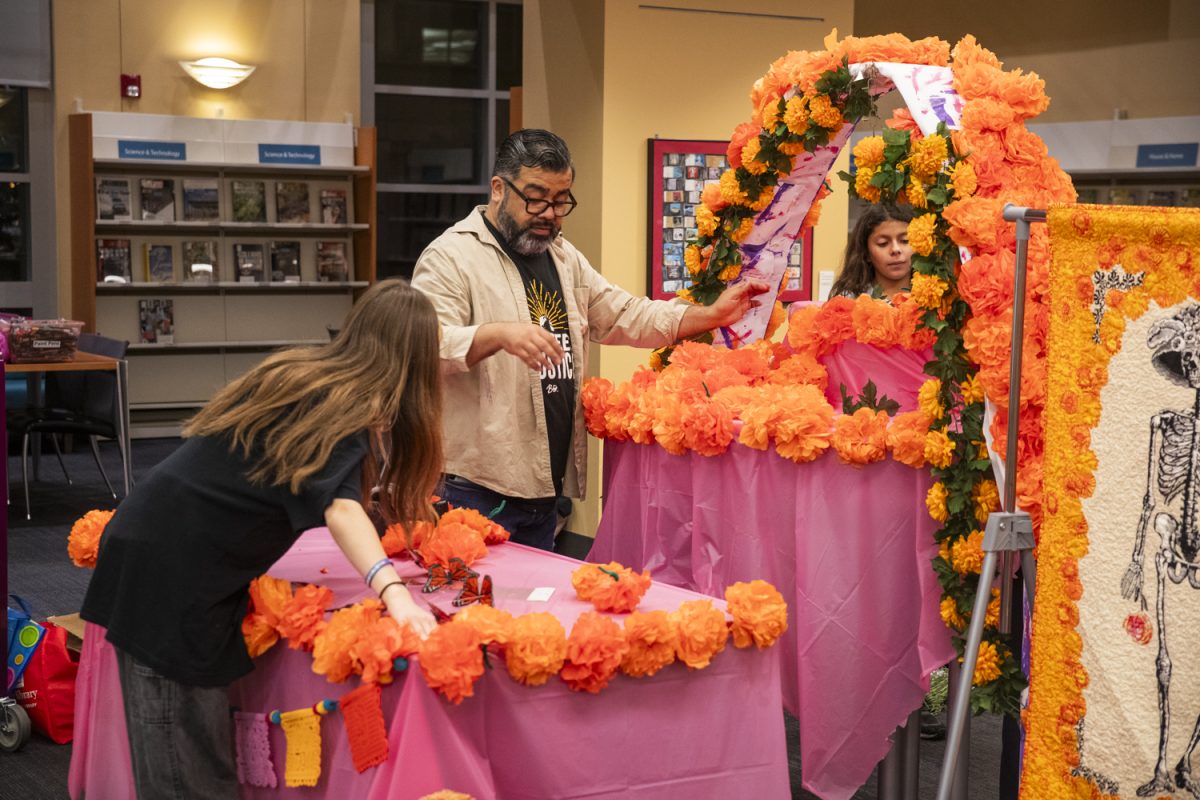For some people, the idea of death can be scary or saddening. However, for some Latin American people, death is something to be celebrated on a special day called Día de los Muertos, or The Day of the Dead.
A holiday dating back to Mesoamerica, Día de los Muertos is a way to remember deceased loved ones, pets, and friends. It is typically celebrated from Nov. 1 to 2, but some families celebrate it earlier.
One of the most notable features of Día de los Muertos is the ofrenda, or altar. It can be a small table to remember one person or a multi-tiered remembrance of many.
The altar is typically decorated with cempasúchil flowers — a marigold with a musky smell — candles, incense, calacas or sugar skulls, papel picado, a paper banner, and the favorite foods and comforts of the loved ones.
In addition to preparing their loved one’s favorite foods, families will also make pan de muerto, or “the bread of the dead.” It is a sweet or savory round loaf, meant to resemble the circle of life and death. The bread can be decorated with knobs of dough meant to resemble a skull and bones, and it’s dusted with sugar or sesame seeds.
The incense, candles, and flowers serve to guide the spirits to the altar. Many families will even make a trail of flowers leading to the altar.
Once the spirits find the altar, they can enjoy the food that has been prepared for them. Their families will then go to the cemetery, eat the food, reminisce, and pray over their deceased loved ones.
“As soon as you walk through the cemetery gates, it’s like you’re with your family again,” Mya Juarez, a teen at the library, said.
The Iowa City Public Library set up its own ofrenda as a way for people to learn more about Día de los Muertos. The display was covered with photos of loved ones, pets, and friends in the community and covered with over a hundred tissue paper flowers. Made by students at South East Junior High School, it is a touching sight.
RELATED: Iowa City Book Fair shows off community talent
The minds behind this ofrenda were Public Relations Specialist Manny Galvez and Teen Services Librarian Victoria Fernandez.
“We have a sizable Latinx population in the community,” Fernandez said. “And a great library holds up a mirror to its community.”
She teamed up with Galvez to gain his insight into the traditions of the holiday. Galvez, who was born and raised in Mexico, was more than happy to help.
“To see my culture [represented] here,” Galvez said. “I feel very welcomed.”
Even though the holiday remembers deceased loved ones, it is not intended to be a sad day. Rather, it is a celebration of life.
“It is [a way] to commemorate how amazing they were when they were physically with us,” Galvez said. “This is a beautiful tradition, and cultural expressions are the best way to connect people.”
In addition to the altar, Galvez and Fernandez set up information boards where people can learn more about the holiday. People are encouraged to write their own poems and put up their own photos on the altar. In fact, several passersby who recognized the ofrenda pointed it out to their little ones.
“This is the very first ofrenda,” Fernandez said. “But it’s not going to be the last one.”



